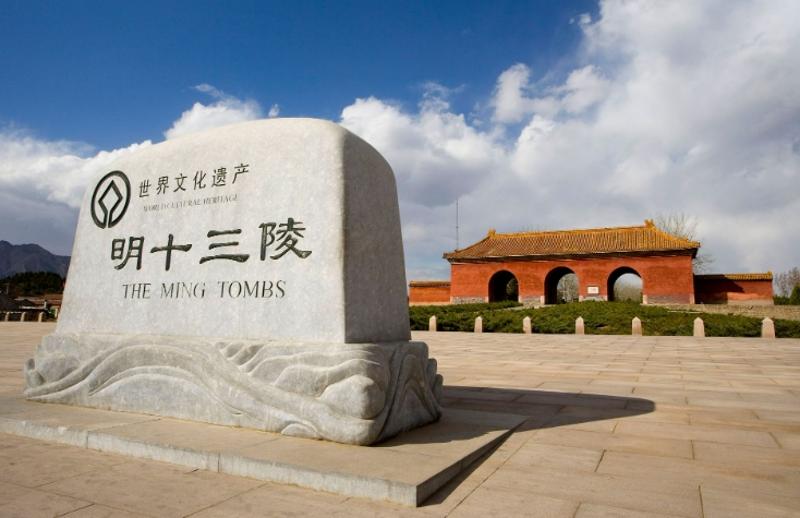What is the Chinese name for the Ming tombs?
The Chinese name for the Thirteen Tombs is "明十三陵" These tombs collectively represent the burial sites of 13 emperors after the Ming Dynasty relocated its capital to Beijing. They are located at the southern foot of Tianshou Mountain in Changping District, about 44 kilometers northwest of Beijing, covering an area of over 40 square kilometers.

Introduction to the background and history of each tomb in the Ming Thirteen Tombs:
- Changling:
Changling is the joint tomb of Emperor Chengzu Zhu Di and Empress Xu. Zhu Di was the third emperor of the Ming Dynasty who seized the throne through the Jingnan Campaign. Changling, the first tomb among the Thirteen Tombs, is grand in scale and magnificent in architecture, showcasing Emperor Chengzu's great talent and vision.
- Xianling:
Xianling is the tomb of Emperor Renzong Zhu Gaochi and Empress Zhang. Zhu Gaochi, the eldest son of Emperor Chengzu Zhu Di, had a short reign but was known for his generosity and righteous governance. Xianling's scale and architecture are relatively simple, reflecting Emperor Renzong's frugal demeanor.
- Jingling:
Jingling is the tomb of Emperor Xuanzong Zhu Zhanji. Zhu Zhanji, the eldest son of Emperor Renzong, presided over a prosperous period of the Ming Dynasty characterized by economic prosperity and cultural flourishing. Jingling's elegant architectural style showcases Emperor Xuanzong's literary talent and governing abilities.
- Yuling:
Yuling is the tomb of Emperor Yingzong Zhu Qizhen. Emperor Yingzong experienced the Jingnan Campaign and subsequent captivity, reflecting the vicissitudes of life. Yuling's architectural style is relatively simple, possibly reflecting Emperor Yingzong's detachment after experiencing adversity.
- Maoling:
Maoling is the tomb of Emperor Xianzong Zhu Jianxun. During Emperor Xianzong's reign, the Ming Dynasty experienced relative political stability and economic development. Maoling's orderly architectural style reflects Emperor Xianzong's governance philosophy.
- Tailing:
Tailing is the tomb of Emperor Xiaozong Zhu Houzhao. Emperor Xiaozong was known as a wise ruler who promoted diligent governance, leading to political clarity and economic prosperity, earning him the title "Hongzhi Renaissance." Tailing's solemn and elegant architectural style reflects Emperor Xiaozong's wisdom and foresight.
- Kangling:
Kangling is the tomb of Emperor Wuzong Zhu Houzhao. Emperor Wuzong was known for his love of martial arts and leisure activities, showing little interest in state affairs. Kangling's unique architectural style may reflect Emperor Wuzong's personality and preferences.
- Yongling:
Yongling is the tomb of Emperor Shizong Zhu Houcong, also known as the Jiajing Emperor. He had a long reign, was deeply interested in Taoism, and had unique views and approaches to governance. Yongling's elegant and grand architectural style reflects Emperor Shizong's wisdom and vision.
- Zhaoling:
Zhaoling is the tomb of Emperor Muzong Zhu Zaiji. Although Emperor Muzong's reign was short, during his reign, the Ming Dynasty reached a peace agreement with the Mongols, ending prolonged periods of war. Zhaoling's simple yet dignified architectural style reflects Emperor Muzong's solemnity.
- Dingling:
Dingling is the tomb of Emperor Shenzong Zhu Yijun, also known as the Wanli Emperor. Emperor Shenzong had an extremely long reign but neglected state affairs in his later years, leading to political turmoil. Dingling is the only tomb among the Thirteen Tombs to have been excavated archaeologically, yielding a large number of precious artifacts.
- Qiling:
Qiling is the tomb of Emperor Guangzong Zhu Changluo. Emperor Guangzong's reign was very short, lasting only one month before his death due to the "Red Pills Case." Qiling's simple architectural style may be related to its short period of use.
- Deling:
Deling is the tomb of Emperor Xizong Zhu Youxiao. During the reign of Emperor Xizong, the Ming Dynasty experienced political chaos and eunuch dominance. Deling's architectural style is relatively simple, possibly reflecting the political situation of the Ming Dynasty at that time.
- Siling:
Siling is the tomb of Emperor Sizong Zhu Youjian. Emperor Sizong was the last emperor of the Ming Dynasty, and despite his efforts to govern, he could not save the dynasty from collapse. Siling's simple yet solemn architectural style reflects Emperor Sizong's tragic and helpless situation.
These tombs are not only treasures of ancient Chinese architectural art but also important tangible materials for studying the history and culture of the Ming Dynasty.